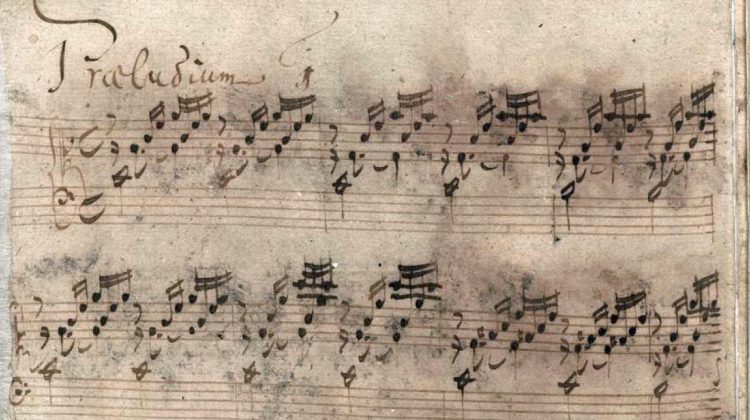He who does not take a thorough pleasure in a simple chord progression, well constructed, beautiful in its arrangement, does not love music; he who does not prefer the first “Prelude” in the Well-Tempered Clavier played without nuances as the composer wrote it for the instrument, to the same prelude embellished with passionate melody, does not love music; he who does not prefer a folk tune of a lovely character, or a Gregorian chant without any accompaniment to a series of dissonant and pretentious chords does not love music.
Camille Saint-Saëns Musical Memories, 1919
Welcome to our second concert of BCMS Season 39. The first concert marked our return to performing in Jordan Hall and the introduction of bassist Thomas Van Dyck as one of our two newest Member Musicians in works by Sándor Veress and Felix Mendelssohn.
Our second concert welcomes clarinetist Romie de Guise-Langlois as a Member Musician and introduces a new work written for her by Lowell Liebermann, Sonata for Clarinet and Piano, Op. 138(2021). The work is a co-commission supported by the BCMS Commissioning Club. This new work is preceded on the program by String Trio in G major, Op. 53, No. 1 by Franz Joseph Haydn, long regarded as the father of chamber music.
Coincidentally, we played the same String Trio on our last public concert on March 9, 2020 on Sanibel Island in Florida. We returned home the next day to a state of emergency, evacuations of our campuses, and cancellation of all public events including the rest of our season. Left un-played in Boston was our then latest commission by Joan Tower, Purple Rain for string quintet, which we plan to premiere live next February.
In the meantime, we were approached by Romie who has frequently appeared with us in Boston and elsewhere about the possibility of jointly commissioning an extended work for clarinet and piano. Since our commissions focus on showcasing the talents and collaboration of our Member Musicians and we had yet to select a clarinetist for membership, this confluence seemed to offer the best of several opportunities—committing to a wonderful artist and colleague even as we continue to foster the creation of new music.
Fortunately for us the composer was equally amenable. Liebermann wrote the following on the new work:
I have wanted for a long time to compose an extended work for clarinet and piano, so when Romie de Guise-Langlois—an artist I have long admired—asked me for one, I was thrilled to oblige….
…My instrumental music is seldom concerned with extra-musical content: it is music for its own sake, evoking abstract emotions but rarely descriptive of things, events, or philosophies. It is for this reason that I have preferred generic titles like “Sonata” for my pieces. (In this case, “Sonata” is used in the broadest sense of a large-scale multi-movement work for instruments: the individual movements bear little resemblance to traditional sonata forms.) Therefore, when asked “what it is all about?” my usual response is that if I could put it into words, there would be no need to write the music…. I am happy for my audience to have just than the movements’ tempo indications as a guide and let them discover for themselves what the music is “about” in real time.
The program concludes with Piano Quartet in B-flat major, Op. 41 by Camille Saint-Saëns whose death one hundred years ago we are marking with this performance and in our December virtual concert with performances of his Fantasie for Violin and Harp, Sonata for Oboe and Piano, and “The Swan” from Carnival of the Animals.
Our observances of the centennial of his death come at time of re-assessment of his importance within the history of our art. A man of considerable pianistic gifts, Saint-Saëns is credited with raising renewed awareness of Mozart’s importance by performing the piano concertos in public. The Piano Quartet in four movements shows influence of Mendelssohn, Schumann and the Baroque, while re-asserting the distinction of Ars Gallica.
Saint-Saëns’s study, editing, publication and performance of works by Rameau, Bach and Handel anticipated popular interest in early music. Meanwhile, he formed Société National de Musique with fellow composers to champion works by his French contemporaries. He listened and wrote prodigiously over a long period—much of it through wars, national upheaval, and pandemic—about developments in music from the time of Rameau through that of Ravel.
Saint-Saëns didn’t always like or fully understand what he heard, perhaps because he trusted music to simply speak for itself without philosophy, system, or interpretation. He wanted music to remain accessible to all.
Enjoy!
Marcus


What a great quote from Saint-Saens! I often felt similarly, that there’s just a real enjoyment to be had from a simple chord progression, written well, played well, and stated simply, but “rightly”… I suppose that’s where the “art” lies, doing each thing “well”, whatever that means.
The usual, pleasurable, informative—and like everything you do, elegant as all get out, Marcus!